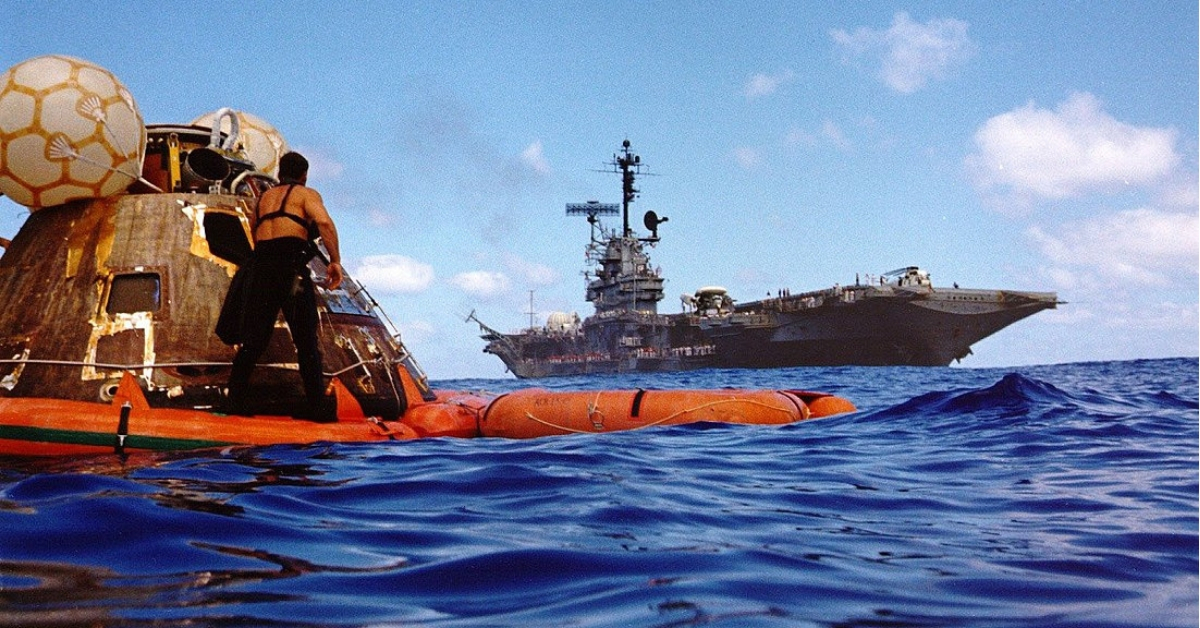The Ticonderoga in and representing History
Aircraft carrier development during World War II represented the culmination of important aspects of naval military history, ranging from the replacement of the battleship as the center of battle to the development of anti-missile technology.
Early aircraft carriers were limited by peacetime treaties between major powers. Because the new Essex class of American carriers were made during wartime, they were not bound by the same treaties. They included wider and longer hulls as well as a deck edge elevator system.
History of the Ticonderoga
USS Ticonderoga (CV-14) represented a new sub-type of Essex-class carrier. The bow was lengthened and changed to a clipper design which allowed two 40 mm mounts to be added. This was an important close-in weapon system.
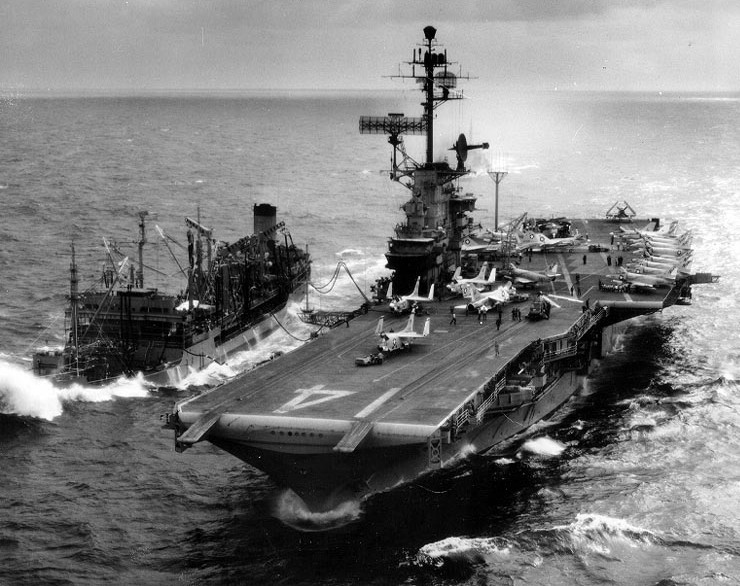
Construction began on Ticonderoga in 1943. It was the fourth ship to be named after Fort Ticonderoga, and was commissioned in 1944.
Designers moved the combat information center to below the armored deck, improved aviation and fuel ventilation systems, and added the fire control director. The lack of these systems in enemy ships mattered a great deal at the battle of Midway, as mentioned below.
Finally, they added a second catapult launcher which improved the rate at which planes could launch.
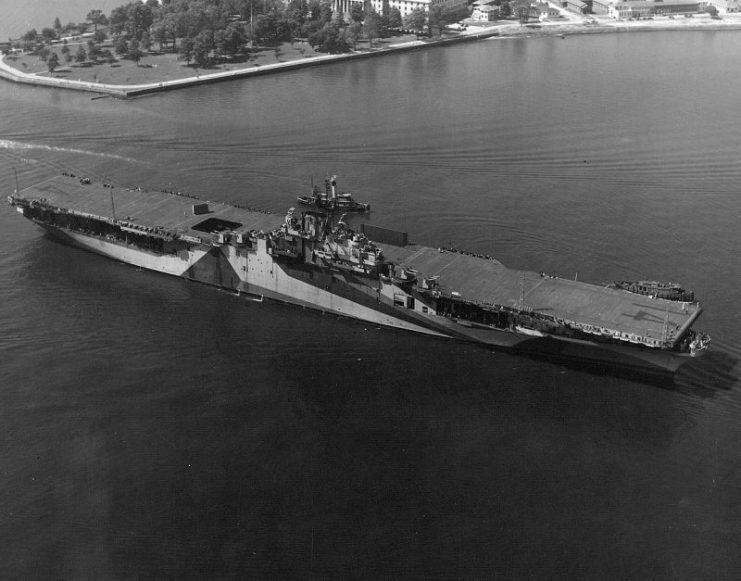
Ticonderoga‘s first commander was Captain Dixie Kiefer. He was a veteran of Coral Sea and Midway, two battles that showed the importance of the aircraft carrier, particularly the improved systems of the Essex class, in naval warfare.
Ticonderoga joined Carrier Task Force Ulithi, and in November 1944 it took part in the Leyte Campaign which was the last major naval battle against Japanese forces. The Japanese would face critical shortages of planes, pilots, and fuel afterward, and begin using their planes as missiles in kamikaze attacks.
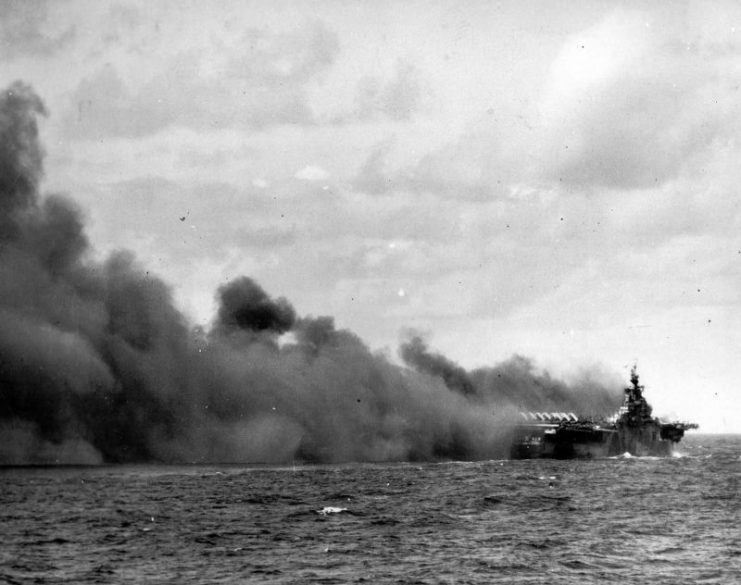
Ticonderoga participated in the battle by launching air attacks which sank a Japanese cruiser and destroyed troop convoys. It also survived kamikaze attacks like the ones that heavily damaged the carriers USS Intrepid and USS Essex.
Despite suffering damage from a typhoon, by January 1945 Ticonderoga bombed Japanese-held Taiwan and covered the landings at Luzon before raiding Japanese-held territory in the South China Sea and China. During this action, it was hit by Japanese kamikaze attacks and limped back to Ulithi and Puget Sound for repairs.
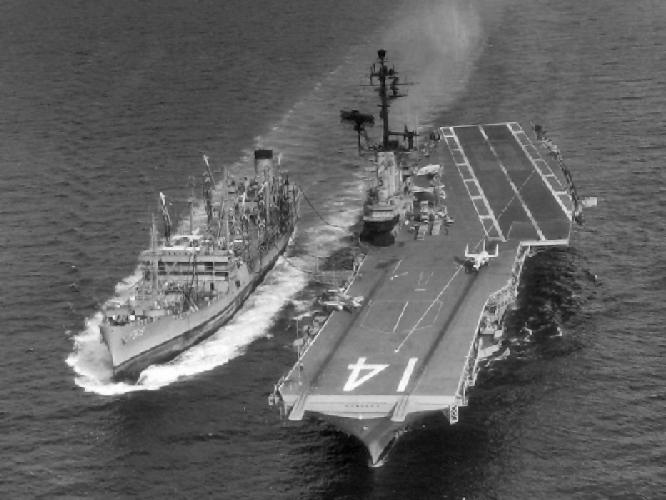
In May 1945 Ticonderoga resumed service in the Far East, where it attacked air bases at Taroa and made raids on the Japanese homelands.
After the war, it was refitted and recommissioned to hold jet fighters. It participated in the Gulf of Tonkin incident and launched airstrikes in support of soldiers in Vietnam. Ticonderoga was decommissioned at the end of that conflict in 1973.
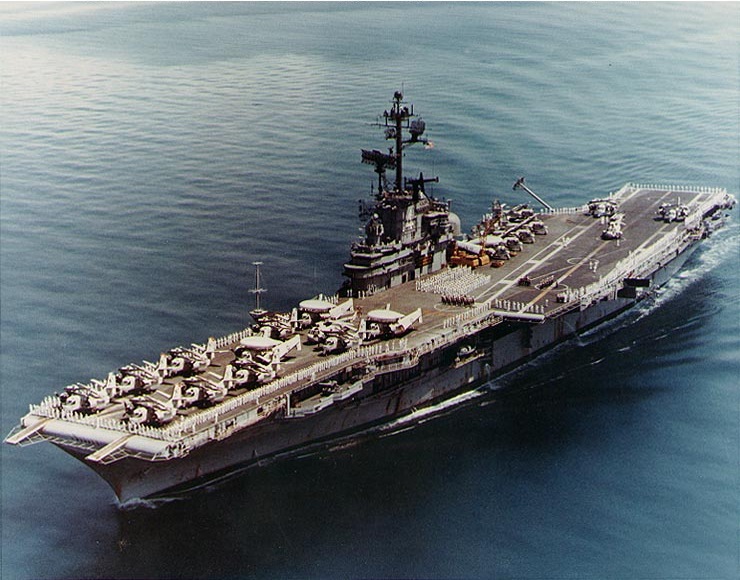
Ticonderoga representing historical developments
These actions by Ticonderoga represented the culmination of the carrier’s ascendance after the Battles of the Coral Sea and Midway. The following shows how carriers became the center of the naval battlefield continuing to the present day.
The United States was incredibly lucky that their carriers were not at Pearl Harbor when the Japanese attacked. Almost by default the carriers became the leaders of American naval action in the Pacific.
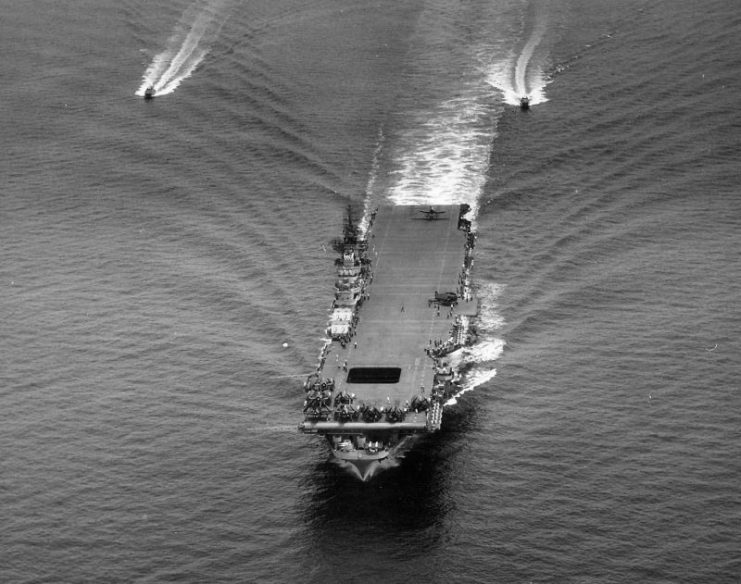
But the ability to launch long range bombers and fighters from a mobile platform became a bigger driver of this development.
Coral Sea was the first major battle of World War II between American and Japanese naval forces, and it was also the first in history in which rival naval fleets fought without ever seeing each other.
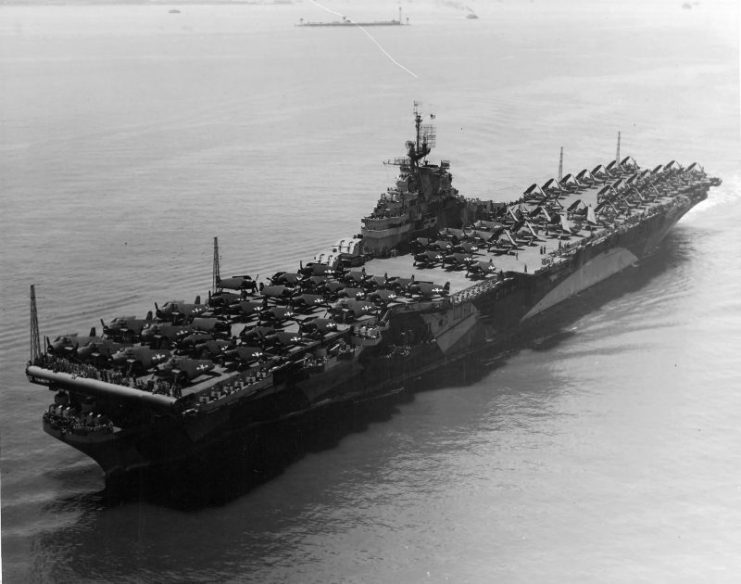
This created a rather strange irony for the battleships. They were the central focus of building programs from the late 19th century onward, and the size of battleships was the driving force that created the treaty that also limited the size of pre-Essex carriers. But during the Coral Sea battle, the battleships took a secondary role.
The next major battle, at Midway, truly showed the importance of the carrier: the Japanese super battleships on the scene were largely irrelevant while American forces sank four Japanese carriers. A key moment was a single hit on the Japanese carrier Akagi.
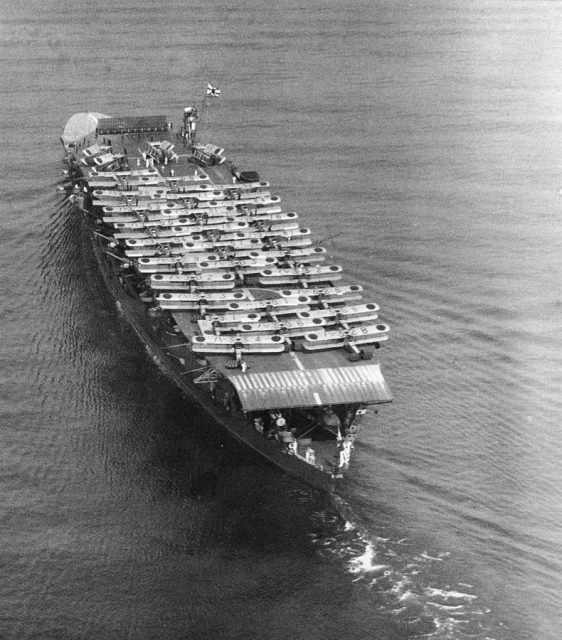
The bomb hit planes that were armed and refueling, which caused a fireball. Because Akagi lacked proper suppression and damage control systems, it was lost while American carriers survived similar scenarios.
Even though Ticonderoga wasn’t yet built at the time of these battles, its operations and improved systems represent the lessons learned and importance of the carrier during them.
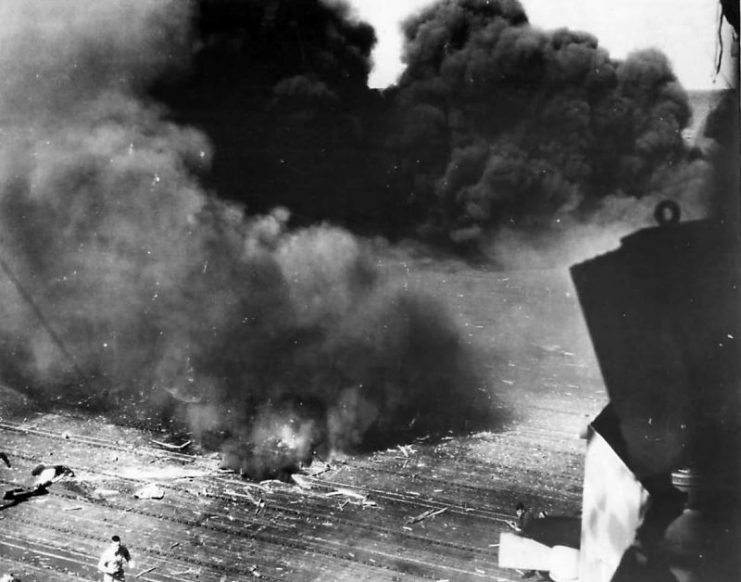
Ticonderoga demonstrates the wide ranging impact of carriers with their ability to assume multiple roles over longer distances than the battleship.
In the space of a year, it participated in the last important naval battle at Leyte Gulf, supported multiple amphibious assaults, defended against kamikaze attacks, bombed rival bases in the South Pacific, attacked Taiwan, and launched attacks on the Japanese homeland.
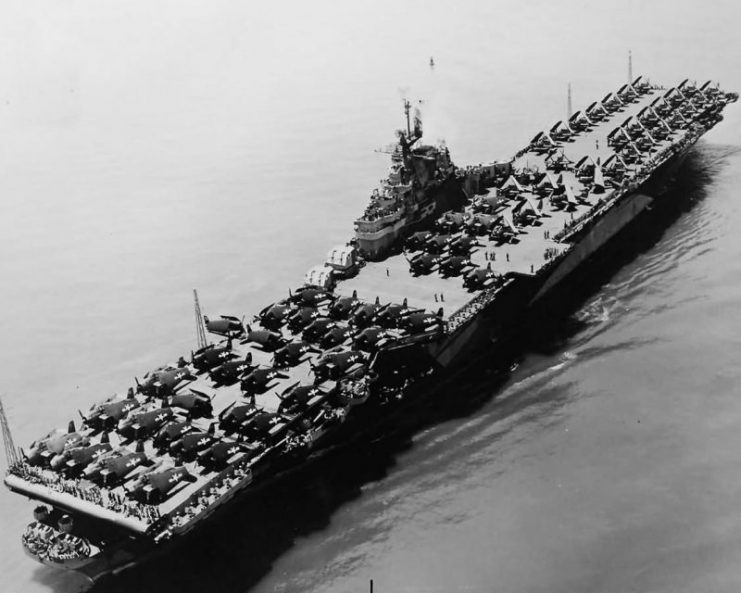
Ticonderoga informs the future
After World War II, the carrier remained the king of naval warfare, but now that position is increasingly being questioned. The introduction of newer and faster missiles sometimes called “carrier killers” has led analysts to question how useful these expensive carriers really are.
The new missiles are simply the newest versions of technology that has been around since World War II, and the United States developed countermeasures immediately. Again, Ticonderoga helps illustrate why the carrier remains important despite such threats.
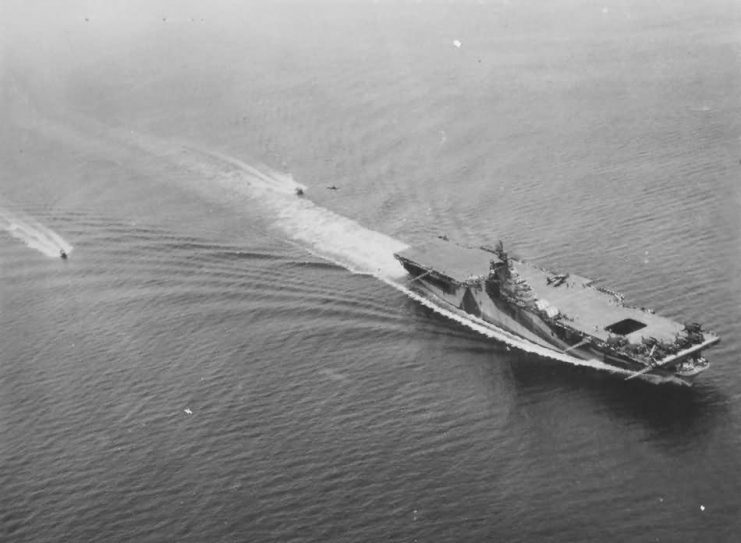
For example, during WWII the Ticonderoga-class of carriers added two 40mm guns that acted as a layer of defense against new threats posed by kamikaze attacks that turned planes into missiles.
Also, the United States continually upgraded the radar on destroyers and eventually added the Aegis systems, so that when destroyers escorted a carrier like Ticonderoga, they provided another critical layer of defense.
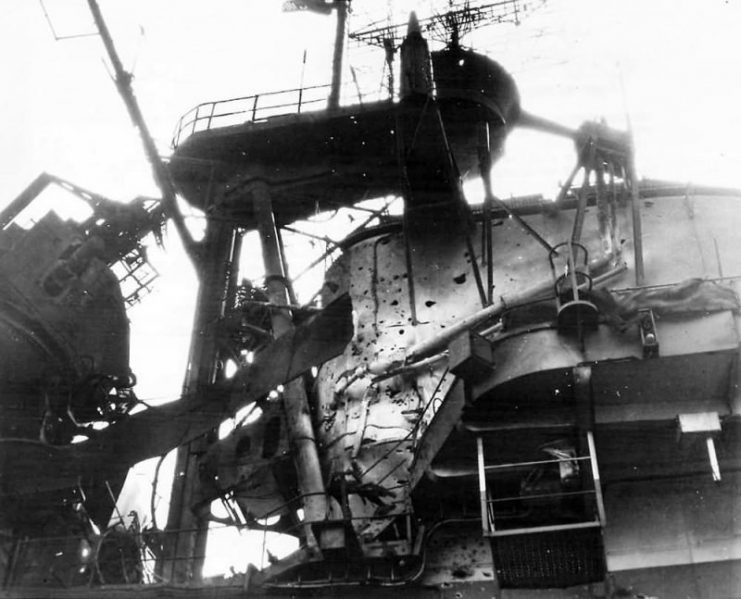
Furthermore, Essex-class carriers beginning with Ticonderoga were upgraded with a second catapult launcher and the capability to fly jet fighters.
The fighters provide what is called the combat air patrol, which identifies and locates potential threats such as rival carriers, aircraft, and batteries that could launch missiles.
While there are new threats that threaten the importance of the carrier, studying their history shows how carriers have adapted to assume and keep their place as the center of the naval battlefield.
